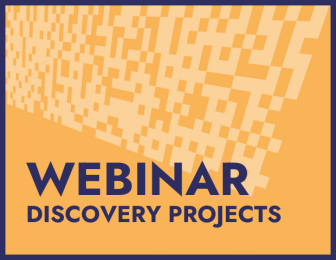Digital Infrastructure
Discovery Project Webinar, 28 February
This Towards a National Collection (TaNC) webinar will focus on digital infrastructure development, bringing together researchers from two of our Discovery Projects, The Congruence Engine and The Sloane Lab.
- Nayomi Kasthuriarachchi, Science Museum Group: History as a Graph: Creating a Network Around the Lost Mills of Bradford’s Textiles Heritage
- Marco Humbel, UCL London: Collection data infrastructures: latent challenges and dynamics in the heritage sector
- Natasha Kitcher, Science Museum Group: Transforming personal researcher notes into public archival descriptions
The webinar will begin with Nayomi Kasthuriarachchi, discussing how data science, and graph technologies in particular, might be used to provide insights into previously unseen connections between people and places involved in Bradford’s 19th century textiles industry. Marco Humbel will talk about digital infrastructure development, sharing the findings of a critical literature analysis and a series of semi-structured interviews with ten heritage organisations and aggregators, unpacking challenges and exploring actionable recommendations for future infrastructure development. Natasha Kitcher will look at the motivation and process involved in turning human generated notes into either catalogue descriptions or catalogue tags that will improve the searchability of the archive for future users. There will then be an open Q&A session
Full abstracts
Nayomi Kasthuriarachchi: History as a graph: creating a network around the lost mills of Bradford’s textiles heritage
The Congruence Engine’s Lost Mills project is using graph-based approaches to reanimate the history of textiles manufacturing in Bradford and the wider environs of the West Riding, Yorkshire. Through creating a network of heterogenous, previously unconnected, data on the people, places, methods, machinery and built environment of the Bradford and West Riding textiles trade, Lost Mills will piece together and resurface stories from a region central to Britain’s industrial heritage that once had over 350 working textiles mills and processed at least two thirds of the wool produced in the UK. [1],[2]
References:
[1] P. Chrystal, Bradford at Work: People and Industries through the Years. Amberley Publishing, 2018.
[2] T. Jowitt, Bradford, Textiles and Society in Bradford and Lawrence, USA, 1880-1920, https://www.bradfordhistorical.org.uk/textiles.html#ref8.
Marco Humbel: Collection data infrastructures: latent challenges and dynamics in the heritage sector
Libraries, archives, and museums have a fundamental role as data providers for digital infrastructures. But their experiences, perspectives, and needs are in respect to this role not well known and undertheorized. As a response the Sloane Lab conducted a critical analysis of the literature and a series of semi-structured interviews with 10 heritage organisations and aggregators. This presentation will unpack the latent challenges surfaced in the consultations and will make actionable recommendations for future infrastructure development of interest for practitioners, researchers and funders.
Natasha Kitcher: Transforming personal researcher notes into public archival descriptions
Researchers are already producing hundreds of pages of notes every time they work through an archival collection. These notes go on to inform publications, which can slowly impact a wider audiences’ understanding of resource availability, but what if we could use these notes to immediately (and automatically) transform an archival collection? This paper will look at the motivation and process involved in turning human generated notes into catalogue descriptions that can improve the searchability of the archive for future users.

